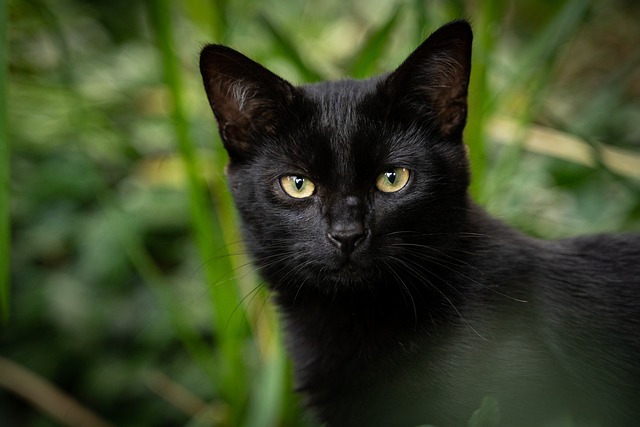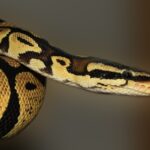 7 Apr
7 AprWhat Colors Can Cats See? Understanding Cat Vision and Colour cat can see
Introduction to Cat Vision
Have you ever wondered What Colors Can Cats See? Cats are known for their sharp faculties, counting sharp visual perception, and their recognition of color contrasts from that of people. Understanding how cats see the world around them can give profitable experiences into their behavior and preferences.
The Structure of a Cat’s Eye
Like people, cats have eyes with focal points, corneas, retinas, and other structures that permit them to see the world. In any case, a few contrasts within the life systems of a cat’s eye impact how they see color and light.
The Part of Pors and Cones
Rods and cones are photoreceptor cells found within the retina of the eye. Poles are mindful of identifying light and movement, whereas cones are capable of color vision. Cats have more bars and fewer cones compared to people, which influences their capacity to see colors.
What Colors Can Cats See?
While cats are not colorblind in the same way that a few people are, their discernment of color is distinctive due to the dissemination of poles and cones in their retinas.
Limited Color Spectrum
Cats essentially see the world in shades of blue and green, with the restricted capacity to recognize between ruddy and orange tones. This can be because they have fewer cones delicate to long wavelengths, which are dependable for identifying ruddy and orange colors.
Preference for Blue and Green
Cats’ upgraded affectability to blue and green colors is thought to be an adjustment for chasing prey, as these colors are commonly found in common situations such as grass, foliage, and sky.
How Cats Utilize Their Vision
Despite their constrained color recognition, cats have great vision that serves them well in different angles of their lives.
Hunting and Prey Detection
Cats depend intensely on their vision when chasing prey, utilizing their intense profundity discernment, fringe vision, and low-light vision to stalk and capture their quarry.
Navigating Their Environment
Cats utilize their vision to explore their environment, judge separations, and distinguish potential dangers or deterrents in their path.
Communication and Social Interaction
Cats too utilize visual signals and body dialect to communicate with other cats and people, such as expanding or choking their students, raising their tails, or showing other facial expressions.
Toy Preferences
Cats may appear inclinations for toys that are blue or green, as these tones are more obvious to them. Toys that imitate the development of prey, such as plume wands or laser pointers, are too engaging for cats.

Environmental Enrichment
Providing cats with an assortment of outwardly fortifying objects and situations can upgrade their in general well-being. Consolidating distinctive surfaces, statures, and colors into their environment keeps them rationally and physically engaged.
Choosing Cat Accessories
When selecting extras such as bedding, scratching posts, or toys for your cat, consider their color vision capacities. Selecting things that are blue or green may make them more alluring and agreeable for your cat friend.
Research on Cat Vision
Scientific considerations have given profitable bits of knowledge into how cats see the world and how their visual capacities compare to those of other animals.
Color Recognition Experiments
Researchers have conducted tests to decide cats’ color inclinations and their capacity to recognize distinctive tints. These ponders offer assistance to us in understanding the subtleties of cat vision and behavior.
Evolutionary Adaptations
Cats’ visual capacities have advanced over millions of a long time to suit their ruthless way of life and nighttime chasing propensities. Their sharp faculties and intense vision contribute to their victory as gifted seekers and summit predators.

Conclusion
While cats may not see the world within the same dynamic colors as people, their interesting visual capacities are superbly suited to their evolutionary needs as seekers and companions. By understanding how cats perceive color and light, ready to gain a more profound appreciation for their captivating tangible world.
Unique FAQs
Can cats see in the dark?
Yes, cats have fabulous night vision much obliged to their huge understudies, intelligent tapetum lucidum, and a tall number of poles in their retinas.
Do cats see in dark and white?
While cats are not colorblind in the same way that a few people are, their color recognition is constrained compared to humans.
Do cats favor certain colors over others?
Cats are thought to have an inclination for blue and green colors, which may be related to their developmental history as hunters.
Can cats see television screens?
Cats can see development on TV screens, but their capacity to see pictures may be constrained compared to people due to contrasts in visual acuity.
How do cats’ visual capacities compare to those of other animals?
Cats have amazing vision compared to numerous other creatures, especially in low-light conditions. Their capacity to see movement and identify prey makes them exceedingly effective seekers in their normal environment.
Can cats recognize between particular shades of blue and green?
Yes, cats have several capacities to recognize between unmistakable shades of blue and green, even though their acknowledgment may not be as nuanced as that of humans.
While it’s not central to organize your living space exclusively based on your cat’s color vision, setting bracing components such as toys and embellishments in blue or green tones can enhance your cat’s environment and enhancement.
Can cats see the colors of their food?
Cats may not see the colors of their food inside the same way individuals do, but they are still able to recognize and recognize different sorts of food based on other unmistakable signals such as fragrance and surface.



